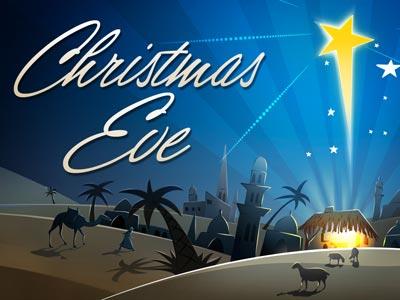-
Christmas Eve Series
Contributed by Alan Mccann on Dec 14, 2006 (message contributor)
Summary: The genealogy of Matthew has much to teach us about Christ and our understanding of God
Christmas Eve Service 2006
Matthew 1 verses 1-17
How many Christmas Eve services have you attended in your lifetime? Is there anything new for you to hear this evening concerning the birth of Jesus Christ? I wondered that when I sat down to prepare this address. What can I bring that is fresh or new this Christmas? But the truth it is not about something fresh and new being brought to you but about the old story of Christ’s birth coming afresh into our lives and once again touching us and transforming us. So this evening I want just to reflect for a few moments on Jesus’ ancestors, recorded for us in the first chapter of Matthew’s gospel.
Tracing your family tree is a popular thing to do these days. We soon realise when we start to trace back through the years that it is not just a dusty historical or academic exercise but the people come alive again before us. Sometimes we find out surprising facts or even scandalous facts about our ancestors. Maybe we are even hoping to find some long forgotten investment that has been quietly building up a fortune for us to come and claim. It was no different at the time of Christ’s birth. Genealogical lists were of great importance to Jews. It gave them legitimacy, identity and established significance. When Matthew lists the ancestors of Christ that is exactly what he is seeking to do – Matthew 1.1. All Jews could trace their ancestors back to Abraham.
When we examine the genealogy that Matthew records we see that he has grouped them in three groups of 14. He has imposed an artificial structure on the ancestors of Christ and to fit his scheme he skips generations on a few occasions. For example he omits four generations of kings of Israel, all of whom were cursed by God. Is Matthew deliberately sanitising Jesus’ lineage – well no as we shall see in a moment. We have to remember that Matthew is writing a ‘gospel’ and not an accurate historical lineage of Jesus. So let us look a little more closely at this list of ancestors.
The first group of 14 speak of Jesus being the son of Abraham. We know from the book of Genesis that Abraham was called by God and given the promise that he would be the father of all nations and bring blessing to all nations. He was not just the father of the Jews but also of the Gentiles. In Hebrews 11.8 we are reminded that he was a man of faith – who looked forward to the fulfilment of the promise made to him by God. That promise of blessing to all nations was fulfilled in Christ Jesus. In Christ Abraham’s faith and hope finds fulfilment and definition.
The second group of 14 speak of Jesus being the son of David, who was held to be Israel’s greatest king. In fact in the list which Matthew gives us David is the only one with the prefix ‘king.’ In this group Matthew wants us to understand that Jesus is from the line of David – the royal house of Israel and therefore a ‘king’ but a much greater ‘king’ than even the greatest king in the history of Israel. In Jesus Christ the promise made to David (2 Samuel 7.12-16) of an eternal kingdom from him would be established is brought to fulfilment.
The third group of 14 shows us that Jesus is a ‘son of the Exile.’ In verse 12 and verse 17 we realise that Jesus is descended from those who were exiled from their homes and taken off into another country – Babylon and Egypt. For those reading this genealogy for the first time bitter memories, painful memories would have been evoked. Jesus is descended from those who knew suffering and the pain of being dispossessed. He would know this in His own life also.
Through all of this Matthew wants us to realise that this is no ordinary family tree but a sign of God at work through history and through generations to this moment of a little baby born in a stable in Bethlehem.
One of the things which often happens when you research a family is that skeletons appear out of the cupboard. Jesus is no different. Let me list the skeletons for you from the genealogy provided by Matthew – Tamar, Rahab, Ruth and Bathsheba.
Tamar – we read of in Genesis 38, she is an Aramean and she seduces her father-in-law. She has to bear the scandal of becoming pregnant outside of marriage.
Rahab – we read of in Joshua 2, a Canaanite woman, a prostitute who speaks these words to the two spies ‘according to your words, let it be so.’

 Sermon Central
Sermon Central



